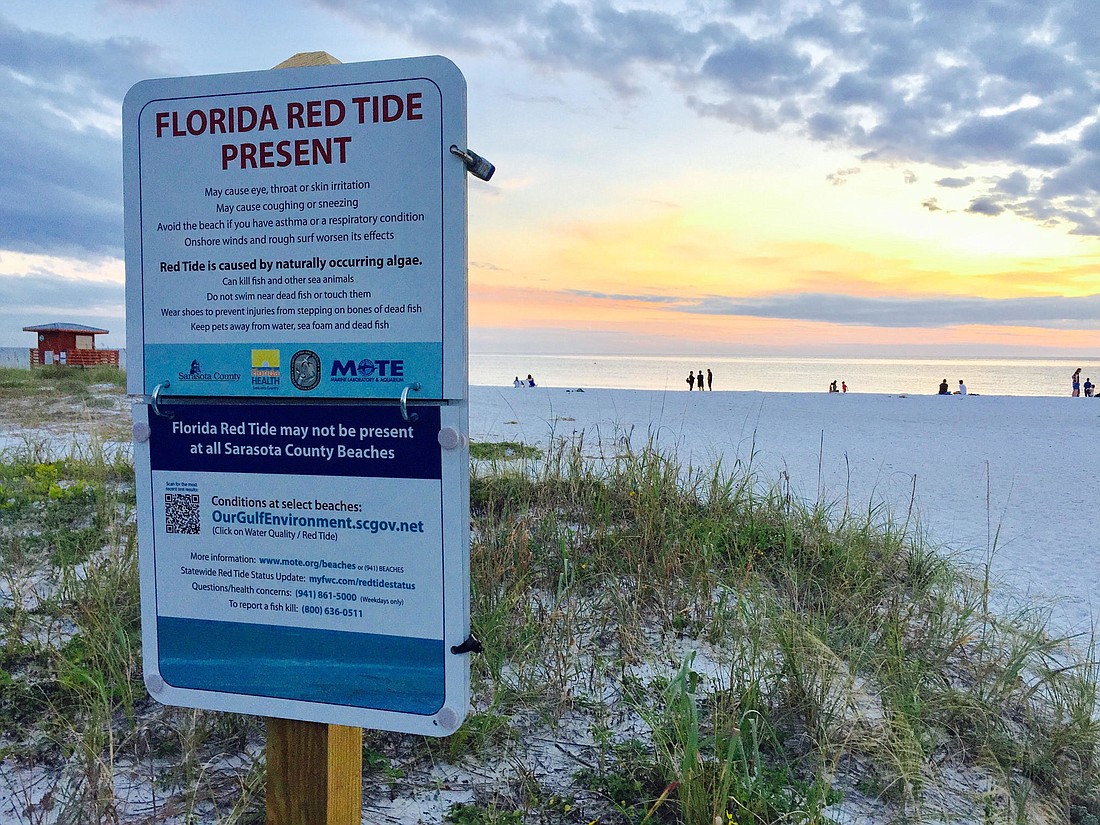- April 23, 2024
-
-
Loading

Loading

The Longboat Key Revitalization Task Force has offered to share the conclusions of its recent red tide study with the Environmental Protection Agency, a move it hopes will draw attention to the dangers that the algal bloom presents to Florida’s gulf coast.
In a Jan. 22 letter to Mary Walker, the EPA’s acting regional administrator in Atlanta, Tom Freiwald, chairman of the task force, wrote that increased pollution has given the bloom resiliency and a longer life.
“We are under biological attack and are losing the fight,” said Freiwald, who shared the letter with the Longboat Key town commission at its Tuesday workshop meeting.
Freiwald and fellow Task Force member Lenny Landau conducted a study of karena brevis and its local effects. They presented their findings in December to members of the Federation of Longboat Key Condominiums.
Freiwald said the problem Florida has in battling red tide is that there is no one leading the effort to mitigate the problem. He hopes by bringing the issue to the attention of the federal agency, that management issue will be solved.
Locally, red tide struck in force beginning in late July and blanketed the region with the carcasses of dead sea life on the beaches and in canals. The stench of decaying fish and the respiratory distress brought by the organisms drove visitors from the area. Waterfront businesses in many cases reported double-digit percentage losses compared to late summer 2017. Local government agencies – using a variety of methods – spent thousands to clean up the mess.
“People talk about red tide,” Freiwald said. “They then say 'let’s go to the Florida red tide hot line' and discover there is no head person.”
“Florida by itself can’t fix the problem.”
According to a Jan. 18 update – the most recent available - from the Florida Department of Environmental Protection, red tide can still be found in background to high concentrations in Sarasota County and low to medium concentrations in neighboring Charlotte County.
Karena brevis occurs naturally but can proliferate with pollution. It thrives in bright sunlight in water temperatures between 55 and 86, conditions frequently present in the gulf. It is not found as often on the state’s east coast because water temperatures are colder, Landau said in December.
In the letter, Freiwald asked the EPA to take a leading role, as it did in 2010 in setting a "pollution diet'' for the Chesapeake Bay through a Total Maximum Daily Load program which encompassed portions of six states (New York, Pennsylvania, Maryland, Virginia, Delaware and West Virginia) and the District of Columbia. Plans were set to meet those limits on nitrogen, phosphorus and sediment pollution by 2025.
“We believe a similar application effort by the EPA is required on Florida’s Gulf Coast and will result in meaningful mitigations of red tide,” the letter said.
Given the federal government shutdown is now a month long with no resolution in sight, Freiwald said he does not expect an immediate response from EPA.
“Our next step will be to wait for an answer,” he said. “This letter is to stir up the conversation. We need people to say that someone is needed to lead the effort.”
“This is a leadership issue,” he said.